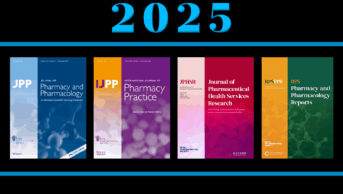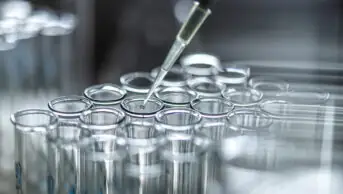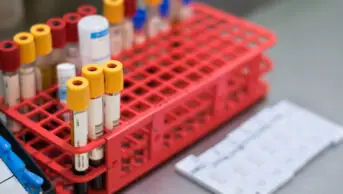It is not often that I see the words ‘twilight zone’ and penicillin together in a sentence, let alone in a news headline. So my interest was immediately piqued when I read: ‘Ocean fungi from twilight zone could be source of next penicillin-like drug‘. The news article was reporting on a publication in Frontiers in Science that was cataloguing the “global ocean genome”, including the distribution of marine genes according to taxonomical domains in different ocean depth zones. While the paper itself, on reading it, does not reference penicillin directly, it is the finding that “fungi represented over 50% of the distinct gene clusters identified in the mesopelagic zone” that gave rise to the news headline; the mesopelagic zone being the ‘twilight zone’, the lowest level of the ocean to which light can penetrate. The case made within the news article is that since penicillin originated from a fungus called Penicillium, the abundance of fungi in the ‘twilight zone’ could thus lead to the discovery of other new species with similarly useful biochemical properties in humans, which could in turn be mined for therapeutic profit by the marine biotechnology industry.
What a coincidence then that, during the same week, I was informed that two of the Royal Pharmaceutical Society’s (RPS’s) research journals are inviting manuscripts on themes relating to nature-derived drugs. The first is the RPS Pharmacy and Pharmacology Reports’ invitation to submit to its themed collection on ‘Drugs from natural products’. The second is the Journal of Pharmacy and Pharmacology’s (JPP‘s) invitation for authors to contribute to its special issue on ‘Bioactive compounds and their role in the regulation and treatment of chronic diseases’. Bioactive compounds are defined therein as substances originating from plants, animals and microorganisms, with the ability to affect other living organisms, tissues or cells. Recognising that a major challenge lies in proving the therapeutic effect of such compounds in humans, the aim of JPP’s special issue is to gather research on specific areas that address the clinical potential, and therefore practical application, of bioactive compounds, including their mechanism of action, bioavailability, individual responses and clinical translations. Therefore, my focus this month is on research relating to bioactive compounds and their interface with our work, namely chronic health conditions.

The first such paper published in JPP examines “natural products derived from herbs as [a] promising source for diarrhoea predominant-irritable bowel syndrome via [the] gut microbiota–serotonin pathway”. The authors reason that the absence of effective treatment for diarrhoea-predominant irritable bowel syndrome (IBS) necessitates the search for novel therapeutic agents, potentially to address a disordered gut microbiota-serotonin pathway, based on prior research. In the review paper, the authors first focus on explaining the gut microbiota–serotonin pathway in IBS, including an examination of the limited evidence on whether it is gut microbiota that regulates serotonin through its biosynthesis and transport, or serotonin that regulates gut microbiota. Second, the authors summarise and report on a range of herb-derived natural products as having therapeutic effect in diarrhoea-predominant IBS by regulating the gut microbiota–serotonin signalling pathway. These include the “herbal medicine prescription (Tongxie yaofang, Changkang Fang), plant extracts (Atractylodes oil, Berberis heteropoda Schrenk), and other monomers (resveratrol, phyto-thymol) from plants”. The first of these, Tongxie yaofang, is even said to be recommended for diarrhoea-predominant IBS in the consensus-based guidelines for the diagnosis and treatment of the condition published by the China Association of Traditional Chinese Medicine. Since these herb-derived natural products are stated to show effectiveness in clinical practice, the authors’ ultimate hope is that their work will lead to the development of novel drugs based on the bioactive compounds identified within.
Also published in JPP, the second paper I read was a review of ‘phloretin’ and its potential in diabetes and related complications. Phloretin, the authors explain, is a dihydrochalcone compound found in apples, strawberries, pears and sweet pea. Having been studied extensively for its pharmacological activity in diabetes, the authors make the case for a detailed and scientific review of phloretin’s antidiabetic action, including its pharmacokinetic profile, mechanism of action and clinical potential. Their review sets out to detail the absorption, distribution, metabolism and excretion of phloretin, including its naturally-occurring glucoside form, phlorizin (which is enzymatically converted to phloretin in the body), and how these pharmacokinetics might be altered in diabetes, prompting the need for further research. The antidiabetic potential of phloretin is then examined via different mechanisms that include decreasing insulin resistance and improving adipocyte-regulated insulin sensitivity. Finally, the authors review the evidence for phloretin in a range of microvascular complications of diabetes, including diabetic neuropathy, chronic kidney disease and retinopathy, as well as macrovascular complications, including cardiovascular disease, atherosclerosis and vascular endothelial damage. Noting that existing clinical studies of phloretin in diabetes have not used it as a standalone compound, the authors recommend investigating the pure compound of phloretin in future trials.
On the topic of diabetes, the final paper I read was entitled ‘Biochemical changes to the inner ear contributing to diabetes-induced hearing loss: possible pharmacological targets for therapy’. According to a study published in 2021, despite overwhelming evidence of hearing loss as a possible comorbid condition of diabetes, there is not widespread awareness among patients or healthcare professionals about this. According to the US Centers for Disease Control and Protection, over time, damage to the small blood vessels and nerves in the inner ear resulting from hyperglycaemia, as well as hypoglycaemic-induced nerve damage in the same region, means that hearing loss is twice as common in people with diabetes than in those without the condition. This final paper, also published in JPP, seems therefore a timely examination of the biochemical alterations and molecular factors involved in diabetes-associated auditory malfunctioning, so that these might be target of future therapies. While the paper does not reference bioactive compounds specifically, I was heartened to find that others have already begun to investigate bioactive compounds derived from seaweed for diabetes management. Who knows, perhaps the fungi extracted from the ocean’s ‘twilight zone’ might one day be found effective in the management of diabetes, as well as diabetic-induced complications, including hearing loss.


